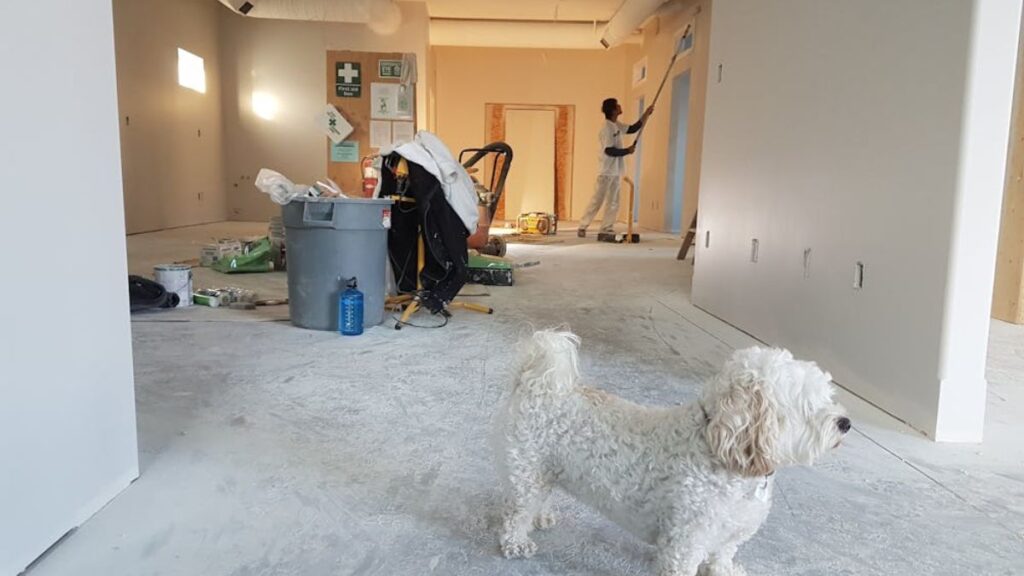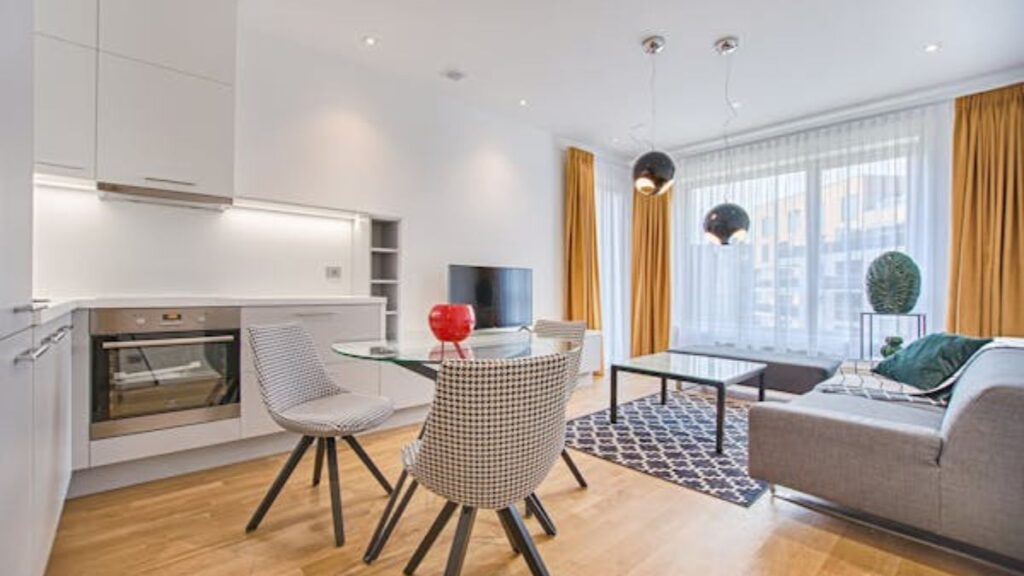Choosing the right color for your living room can be a daunting task, but it’s also one of the most impactful decisions you’ll make when designing your home. The color you pick sets the tone for the entire space, influencing how it feels and how you interact with it. Whether you’re aiming for a relaxing retreat, a lively gathering spot, or a neutral backdrop for your furniture, the color on your walls can completely transform your living room. Understanding how colors affect mood and how to select hues that complement your existing decor can help you create a space that reflects your personality and needs.

Get a Colour Consulting
A professional consultant brings expertise in color theory and design, helping you navigate through the overwhelming number of options. They can assess your space, consider lighting, furniture, and decor, and recommend a color scheme that enhances the room’s atmosphere. If you live in Australia, the local Brisbane house painters you hire can help you choose the perfect colors to enhance your living room and create the ideal atmosphere for your home. Whether you’re looking for a bold, vibrant look or a more subdued, peaceful ambiance, a color consultant can guide you toward the perfect choice, ensuring that your space is both visually appealing and functional.
Think About the Purpose of the Room
Consider how you use your living room daily. Is it a place to unwind with a good book or a space where you entertain guests? The function of the room will directly influence your color choice. If you envision your living room as a peaceful sanctuary, soft shades of blue, green, or lavender may work well to create a serene environment. For a more dynamic space intended for social gatherings, you might want to embrace bold, warm tones that energize the room. Vibrant reds, oranges, or deep yellows can stimulate conversation and encourage lively interactions. If the room serves multiple functions, try a combination of both.
Take into Account the Room’s Size
Lighter colors like pale blues, soft grays, or even whites can make a small room feel more spacious and airy. On the other hand, dark colors like navy, charcoal, or deep brown create a cozy, intimate environment, which works well for larger rooms that might otherwise feel too vast. You don’t have to avoid darker colors entirely if you have a small space. Consider using darker shades on accent walls or furniture pieces, as they can add sophistication and contrast without overwhelming the room. Just ensure the overall room doesn’t become too dark, as it can feel cramped and stifling.
Consider Natural Light
If your living room is filled with natural light throughout the day, you have more flexibility in your color choices. Bold colors will be complemented by the sunlight, making them look vibrant and lively. In contrast, rooms with limited natural light may require lighter, brighter colors to avoid feeling dark and gloomy. Cool shades like light blues or greens can help reflect whatever light enters the room and create a more airy atmosphere. Even warm tones, when kept light and soft, can make a room feel more open and welcoming.
Work with Your Existing Decor
Your existing furniture, flooring, and decor should play a central role in your color decision. If you have a lot of warm wood tones in your furniture, choosing a complementary warm color like burnt orange or golden yellow can create a seamless look throughout. If your furniture and decor lean toward modern or minimalist styles with lots of whites, blacks, and metals, you can choose bolder colors for an edgy contrast. Think about the colors of rugs, curtains, and artwork in the room too. You don’t need to match every color exactly, but coordinating shades can help create a cohesive look. If your living room already features bright, bold decor, you may want to opt for a more neutral wall color to avoid overwhelming the space.
Create a Mood Board
Sometimes, it can be difficult to visualize how different colors will look together in your living room. Creating a mood board is a great way to experiment with color combinations before making a final decision. Gather paint swatches, images from magazines, or even Pinterest boards that feature living rooms with your preferred colors.
Put together a collection of colors that evoke the mood you’re trying to create. If you’re aiming for a peaceful and calming environment, combine different shades of blue and green with neutral tones. For a lively, energetic space, try pairing bold oranges, reds, and yellows with modern neutrals. Seeing the colors in a cohesive arrangement will help you better understand how they’ll work in your own space.
Don’t Be Afraid of Accent Colors
Throw pillows, curtains, rugs, and artwork can bring color into the room and influence its overall vibe. Consider how accent colors will complement or contrast with the main wall color. For example, if you’ve chosen a neutral wall color like soft gray, you can incorporate vibrant accent colors like teal or mustard yellow to add life to the space. If your living room has a bold color scheme, using more subdued accent colors can provide balance and allow the bold tones to stand out without overwhelming the room.
Test Your Color Choices
Before committing to a color for your living room, test it out. Paint a small section of the wall or use large samples to apply the color to a canvas or poster board. This will allow you to see how the color looks in different lighting throughout the day, as well as how it interacts with your furniture and decor. Colors often appear different once they’re on the wall than they do on a sample swatch. Testing will help you avoid surprises and ensure the color you choose truly fits the mood you’re aiming for.

Picking the right color for your living room is about more than just aesthetics – it’s about creating the right atmosphere for your space. Whether you want a peaceful retreat, a lively gathering space, or a neutral environment that works with all styles, color plays a crucial role in setting the tone. By understanding color psychology, considering the purpose of the room, and testing your choices, you’ll find a color that reflects your style and creates the perfect mood. Trust your instincts, and choose a color that feels right for you and your home.







